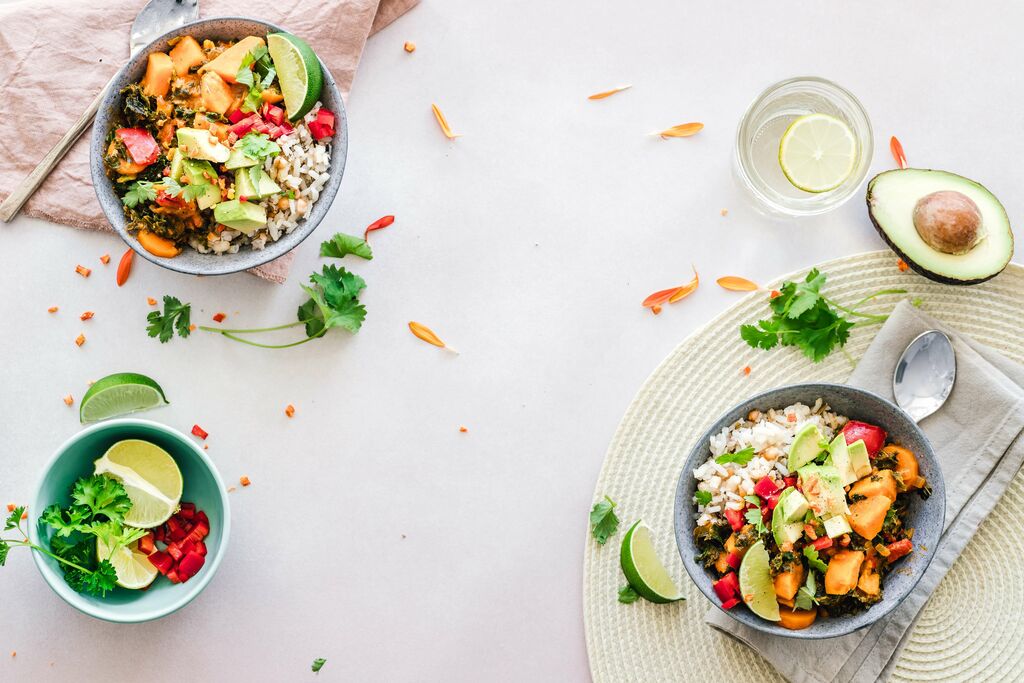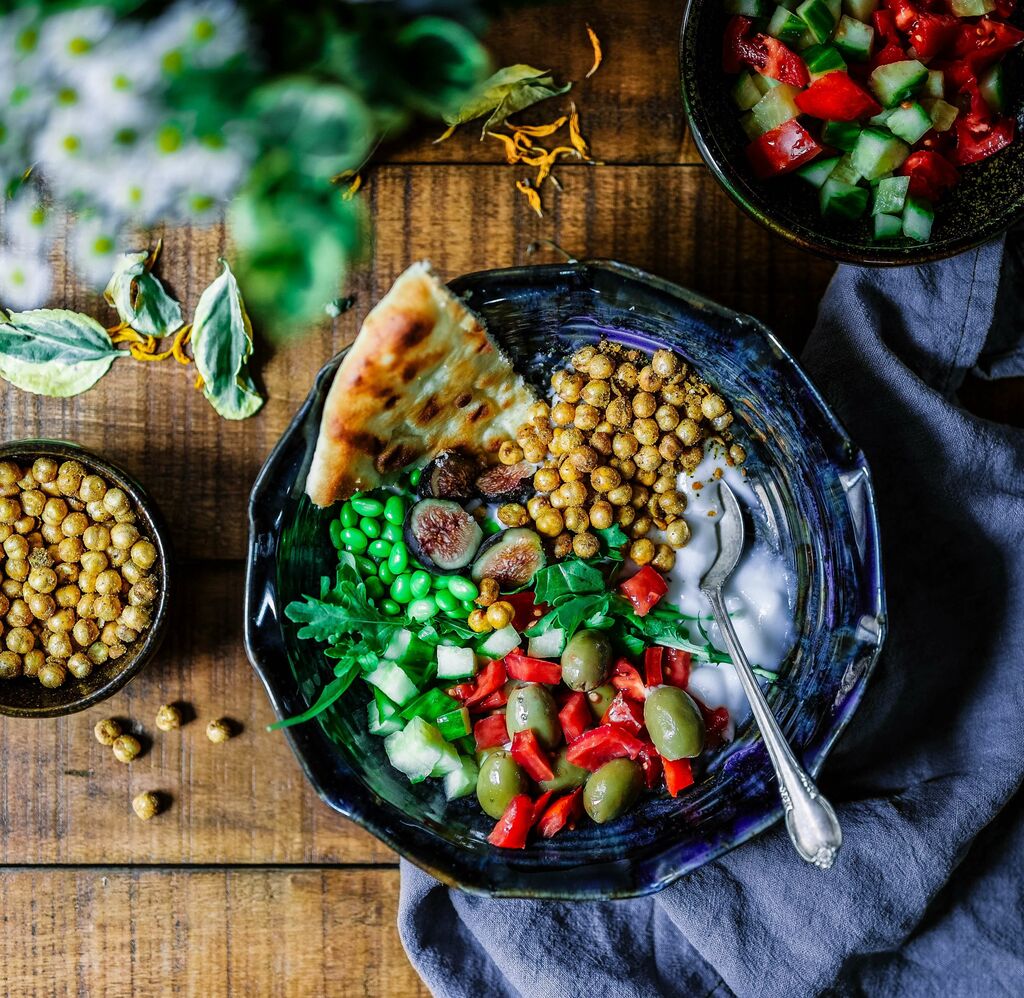Flexitarian Diet: Everything Runners Need To Know About

The flexitarian diet is ideal for those who aren’t ready to cut all animal products cold turkey—especially meat. It also is a great lifestyle for those looking to still eat fish every once in a while without feeling like they are cheating or a “fake vegetarian.”
What is a Flexitarian Diet?
Created by Dawn Jackson Blatner, a flexitarian diet is considered a semi-vegetarian diet. This means that the person is following a vegetarian diet mostly, with a heavy focus on eating vegetables, fruits, plant protein, whole grains, and legumes.
The main source of protein is plant-based. This includes foods such as broccoli, spinach, watercress, asparagus, boy choy, and other non-animal protein like tofu, tempeh, lentils, oats, nuts, seeds, and quinoa.
However, this diet is all about being flexible when it comes to meat and animal products. The main difference here is vegetarians don’t consume any meat but may consume animal products like eggs or cheese. Vegans do not consume anything that comes from an animal, including fish, meats, dairy, and eggs.

Since flexitarians do consume meat or fish every once in a while, these aren’t “true vegetarians.” But this isn’t a bad thing. It’s a diet choice.
More than limiting the amount of meat, fish, and animal products consumed, the flexitarian diet focuses on eating more whole and fresh foods while limiting processed food. They also try to limit the added sugars.
Health Benefits—Even For Runners
Studies suggest there are lots of benefits of following a flexitarian diet. This includes 12 alone that were published between 2000 and 2016 that found improvement in body weight, metabolic health, blood pressure, and the reduced risk of type 2 diabetes.
Weight loss is a major health benefit to adopting this lifestyle. This is mainly due to increasing vegetables that are lower in calories. Just keep in mind that studies found that vegans lose more weight in their diet lifestyle compared to vegetarians and flexitarians.
Even still, cutting out the added sugars and processed food with a focus on more healthy, wholesome foods reduces the risk of obesity, type 2 diabetes and increases cardiovascular health.
All those antioxidants found in diet plentiful of fruits and vegetables also reduces the risk of cancer.
And runners benefit from becoming flexitarian for all these reasons and more.
Many professional runners and elite athletes swear by vegan and vegetarian diets when it comes to their performance.
Plant-based diets have an emphasis on heart health and recovery. And since there are many legumes and root vegetables that are high in carbohydrates, the body’s preferred source of fuel for exercise, there is an increase in endurance.
Other benefits include decreasing inflammation, increases in blood flow and oxygen to the muscles, and lower body fat for overall more fit body composition.
How To Go Mostly Meat-Less

Flexitarians or “flexible vegetarians” consume meat and animal products occasionally. Now, how often?
This depends on the individual. Because it’s a flexible diet at the root of it, the amount of meat or animal products depends on the person’s goals.
An effective way to start is by reducing eating meat to only three days of the week. Think animal products in moderation. Then try to cut it down to two.
Blanter recommends people eating 26 ounces of meat over five days, which breaks down to about three ounces per serving.
This is a great starting point. Many then want to continue cutting down meat to only eating about nine ounces over two days. Others then cut out meat mostly, only consuming when a craving hits or only wanting it to be once or twice a month.
It’s best to focus on animal products that are the most nutritious, like salmon for omega-3, red meat for iron, zinc, and vitamin B12. These nutrients are all important for runners, especially protein for muscle repair.
But keep in mind that plenty of runners are meat-free and can get all their protein from non-animal sources. This could include eating Greek yogurt, which is packed with protein, for breakfast and having a cup of beans for lunch.

Conclusion
The good news is that a flexitarian diet is created to best suit a runner’s needs. This makes perfect for those wanting to eat healthier but enjoy a juicy steak or some eggs for breakfast every once in a while.
This is ideal for runners because they don’t need stress about getting enough protein since meat-eating is allowed. It is less restrictive in that sense. Plus, there isn’t that feeling of deprivation or guilt when going for that post-race burger.
And if all the health benefits aren’t enough, consider the fact that following a flexitarian diet plan is also good for the environment.
This diet helps to reduce personal carbon footprints since less meat and fish are consumed.
Remember that unless the goal is weight loss, it might be smart to increase overall calorie intake when training for a big race. This is because plant-based meals generally are lower in calories compared to meat-heavy dishes.
It might be best to gradually adopt a flexitarian lifestyle when training or considering adding in an extra meat-eating day when amping up the mileage to help with recovery.
Sources
- , Flexitarian Diets and Health: A Review of the Evidence-Based Literature, Medical Journal
- , Athletes Can Thrive on Plant-Based Diets, Health Website
- , Why You Should Seriously Consider Following a Flexitarian Diet, Fitnes Website
Latest Articles
 Is Running on a Treadmill Easier Than Running Outside?Runners have their own preferences, whether it is treadmill running, running outside on the road, or exploring trails. So...
Is Running on a Treadmill Easier Than Running Outside?Runners have their own preferences, whether it is treadmill running, running outside on the road, or exploring trails. So... Is It OK to Use Trail Running Shoes on the Road?While trail running shoes can be used on roads, especially in situations where a runner encounters mixed terrains or pref...
Is It OK to Use Trail Running Shoes on the Road?While trail running shoes can be used on roads, especially in situations where a runner encounters mixed terrains or pref... How to Fix Sore Quads After Running?Rest, ice, gentle stretching, and over-the-counter pain relievers can help soothe sore quads after running. Also, ensure ...
How to Fix Sore Quads After Running?Rest, ice, gentle stretching, and over-the-counter pain relievers can help soothe sore quads after running. Also, ensure ... 10 Fruits With The Most Electrolytes to Replace Sports DrinksThese fruits are high in electrolytes such as potassium, magnesium, and calcium, essential for hydration, muscle function...
10 Fruits With The Most Electrolytes to Replace Sports DrinksThese fruits are high in electrolytes such as potassium, magnesium, and calcium, essential for hydration, muscle function...

